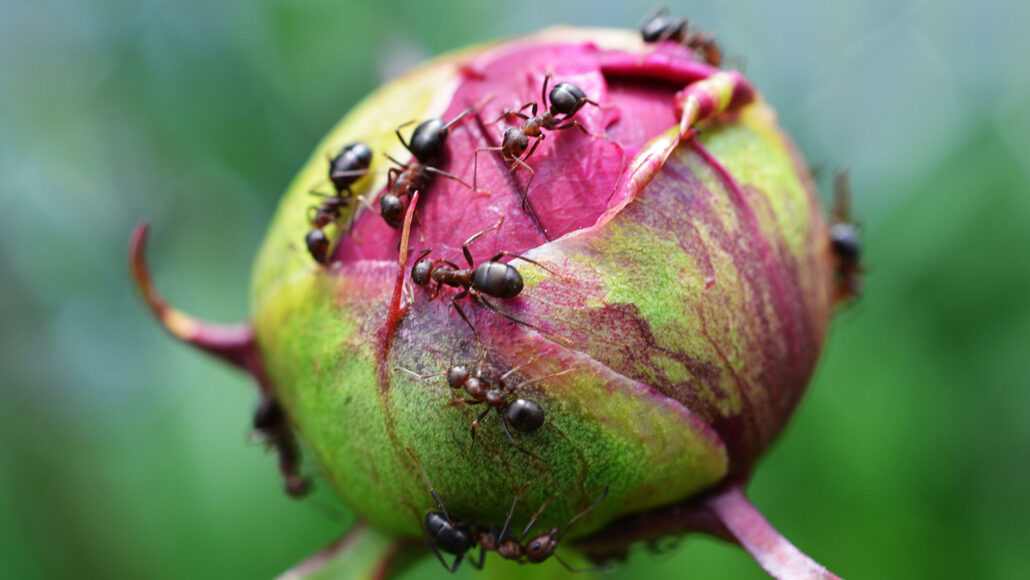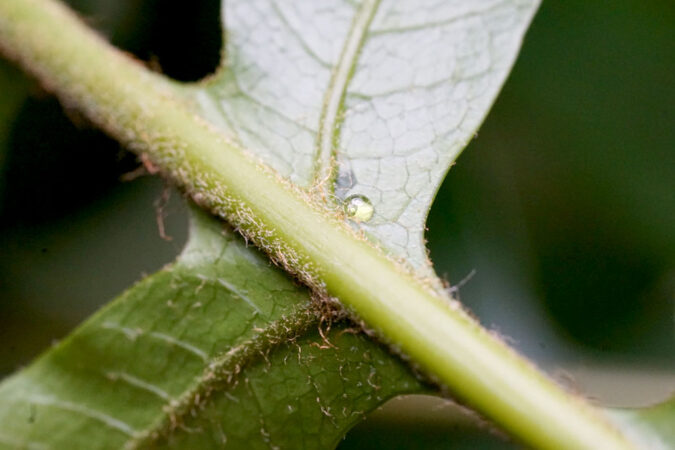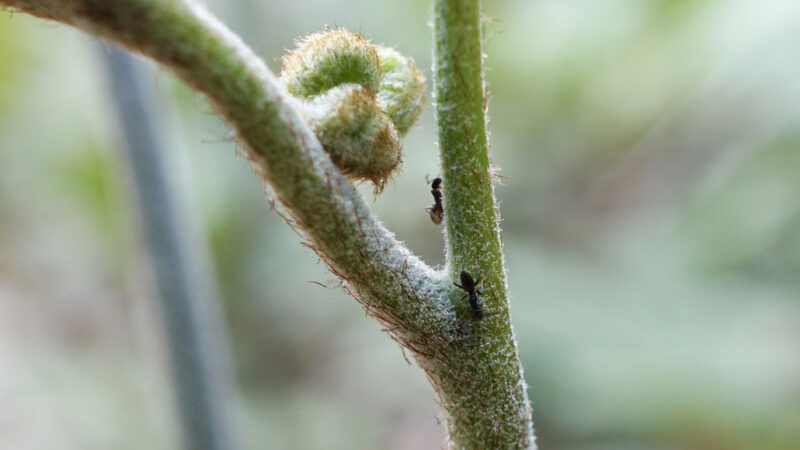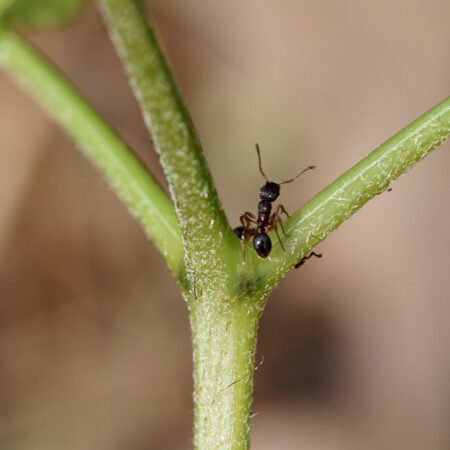Many flowers and ferns lure in ants as bodyguards
In exchange for a meal of nectar, the ants defend their hosts from predatory insects

Most flowers make nectar to lure bees and other pollinators. But some plants, like peonies, produce nectar in other places, too, called nectaries. They do this to recruit ants, which act as bodyguards against plant-eating insects.
PamWalker68/iStock/Getty Images Plus
Earth’s Cretaceous Period is well-known for its huge, lumbering dinosaurs. But many smaller organisms were shaping the landscape at the same time. And the results of these battles can still be seen in today’s woods and gardens.
This period is when the first flowering plants appeared. Some insects developed a taste for those and other plants. In time, some plants found a way to fight back — indirectly. They recruited ants to fend off savaging beetles, flies and caterpillars. And this tactic, it now turns out, started before Triceratops, T. rex or Dreadnoughtus prowled the Earth.
Such ant bodyguards don’t work for free. They take sweet, yummy nectar as payment. Both ferns and flowering plants started bribing ants to do battle for them at about the same time, a new study concludes. It puts that date at roughly 135 million years ago.
“We tend to think that plants are these static organisms that animals eat and take advantage of,” says Jacob Suissa. “But I think the story is the opposite.” Plants don’t just sit there and get eaten, he says. They defend themselves. As a plant evolutionary biologist, Suissa — who led the new work — studies how plants have changed over millions of years. He works at the University of Tennessee, Knoxville.

His team explains how it figured out plants first got ants to help them in the early Cretaceous. The research appears in the May 24 Nature Communications.
How to lure in ants: sweets
Some plants make toxic chemicals to poison or deter herbivores, as plant-eaters are known. Other plants, such as cacti, evolved spines to keep hungry bugs away. But many flowering plants and ferns hire out their defense to ants.
Flowers ooze nectar to lure bees and other pollinators. In much the same way, many flowering plants and ferns secrete this sweet juice to recruit sugar-hungry ants. But this ant lure doesn’t come from flowers. Instead, it “bleeds” from other plant parts. Called nectaries (NEK-tah-reez), these can take many shapes. Some look like a cup. Others may appear to be a bump on a stem. Some nectaries are so tiny that you can’t see them without a microscope.
In truth, the ants don’t show up intending to defend a plant. They come in search of a nectar meal. Once there, though, they might run into a beetle or other herbivore munching on the plant. Ants may turn them into juicy snacks, or chase them away. Sometimes, ants will find eggs that had been laid on the plant by a predatory herbivore and evict them.

Only ferns and flowering plants have nectaries. Today, these two types of plants have little else in common. They started looking very different from each other about 400 million years ago. That’s when they “branched off” from each other on the plant family tree.
Researchers knew nectaries existed for a long time. They also knew that ferns and flowering plants both used them to bribe ants for their help. Suissa and two coworkers at Cornell University in Ithaca, N.Y., wanted to know how long it took each branch of plants to recruit ants this way.
They started by gathering a lot of data on ferns and flowering plants from other scientists. Then they used computer programs to compare those data.
Each branch of plants appears to have developed nectaries at roughly the same time, they now report. It was some 265 million years after evolution had sent ferns and flowering plants on their own separate ways.
Ants and plants team up for a win-win
“I think it’s cool that flowering plants and ferns, which are very distantly related, were evolving the capability to recruit ants around the same time,” says Marjorie Weber. She works at the University of Michigan in Ann Arbor. She did not take part in the new work, but she does study the evolution and ecology of how plants and animals interact.
Nectaries quickly evolved into new shapes as flowering plants built relationships with ants, the new study finds. But ferns were a bit different, Suissa notes. There, nectaries didn’t change shape right away. Instead, new looks in ferns only evolved much later — about 100 million years later. This delay in ferns confused him.

Then his team realized that most of the ants that associate with plants live in trees. Millions of years ago, flowering plants tended to live high in the forest, where those ants were. As ants walked onto flowering plants more often, these plants developed a lot of different nectaries.
Ferns, meanwhile, started on the ground. Over time they, too, started living in trees. And that’s when they also evolved lots of different types of nectaries, the new study finds.
Another surprise came when Suissa looked at when herbivores evolved into lots of species. He thought that ferns would have developed nectaries right after insects started eating them. But no. Insects started nibbling plants long before fern nectaries developed.
“Ferns are great at defending themselves in many other ways, not just with nectaries,” Suissa points out. They already had other defenses, such as harmful chemicals, scales and hairs. Nectaries didn’t become important for ferns until they moved into trees. That’s likely when some ants came over, sampled the nectar — and started chasing off plant-eaters that weren’t killed off by a fern’s other weapons.
When two species interact — and both benefit from this, as the ant and plant do here — it’s known as a mutualism (MEW-chew-ul-ism). “Most of the work on these plant-bodyguard defense mutualisms focuses on flowering plants,” Weber notes. To her, “the really cool thing about this study” is that it finally gives ferns the attention they deserve.







